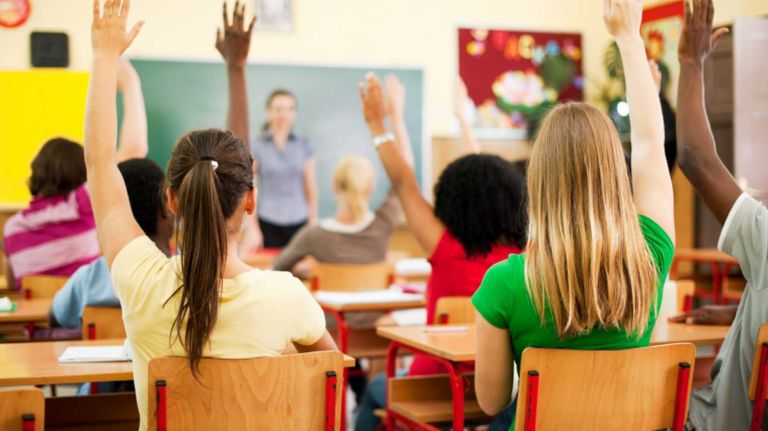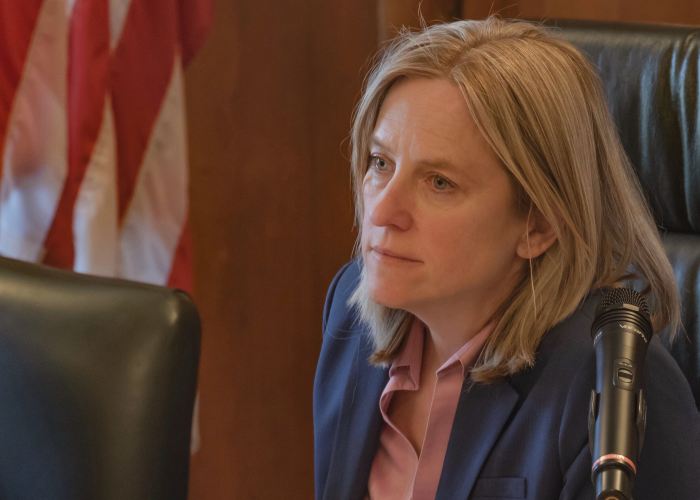A City Council committee scrutinized five bills Monday aimed at increasing access to menstrual products for both students and individuals in the criminal justice system.
The legislative package, which also includes increasing education about feminine hygiene items, was the focus of the Sept. 18 meeting of the City Council’s Women and Gender Equity Committee, chaired by Queens City Council Member Tiffany Cabán. It follows up on legislation the council passed in 2016 to increase menstrual product access.
All elementary and secondary public schools in New York State that serve sixth through 12th graders are required to provide free feminine hygiene products in school restrooms and buildings, as mandated by a bill that took effect in 2018.
“We must have laws and policies that ensure menstrual products are safe and affordable and available for those who need them,” Cabán said at the hearing. “We are here to revisit these laws and highlight the potential shortcomings and implementation to ensure we address them adequately to meet the needs of people who menstruate in the city.”
The hearing was attended by representatives from the city’s Department of Education (DOE), Department of Correction (DOC), and Department of Citywide Administrative Services.
Bronx Council Member Amanda Farías (D-18), who is co-leading the efforts to pass five bills related to menstrual products, also spoke at the hearing. Farías said that the Council is working to remedy the historical neglect of access to menstrual products.
“Menstrual equity is centered on removing barriers to access and removing the long-ingrained stigma surrounding our periods, who uses them, and how available they are to us,” Farías said.
Melanie Weniger, the deputy executive director for policy and programs for the city’s Commission on Gender Equity, is leading a team that monitors policy and legislation, develops and implements programming, and conducts research related to the commission’s three areas of focus, which includes health and reproductive justice.
Weniger shared comments on the five bills being discussed: Intro 1055, Intro 1056, Intro 1057, Intro 1058, and Intro 1059.
- Intro. 1055 would require the DOE to annually report on its supply of menstrual products to students in its facilities.
- Intro 1056 would expand the number of schools and school grades required to provide menstrual products to students.
- Intro 1057 would require the DOC to annually report on the distribution of menstrual products to incarcerated or detained people in its custody.
- Intro 1058 would require the city’s Department of Mental Health and Hygiene to create educational materials on menstrual products.
- Intro 1059 would expand the term “feminine hygiene products” to include menstrual cups, a reusable product that collects blood.
“The administration appreciates the intent of the legislative package and looks forward to discussing these bills further with Council,” Weniger said. “The Adams administration recognizes that access to period products, particularly for vulnerable New Yorkers, is a vital step toward gender equity.”
Weniger said that the administration has expressed “concern” regarding two of the bills: Intro 1057’s requirement to produce an annual report on the supply of menstrual products to incarcerated people and Intro 1059’s proposed use of menstrual cups.
Kat Thomson, the chief of staff with the DOC, told the Council that the agency currently offers pads and tampons in its housing area, aid stations, intake areas, and court commands. There is a commissary where people can purchase tampons and maxi pads, according to Thomson.
The DOC recently ordered more tampons in the last three years because of a lack of availability for incarcerated and detained people.
Questions were raised about the ability of incarcerated individuals being able to afford menstrual products, which cost $15.60 for a 40-count supply of Playtex tampons and $3.90 for a 10-count supply of Tampax tampons, according to Thomson. She noted that incarcerated individuals can earn hourly wages between 55 cents to $1.55, depending on which one out of three wage structures they are in.
“They would have to possibly work 15 hours to afford one box of tampons,” Cabán pointed out. “The wage doesn’t reflect the need to have sufficient funds to cover the cost of what are necessary products.”
Weniger said that the city administration does support Intro 1055’s aim to pivot to using the term “menstrual products” on documents and materials, as opposed to “feminine hygiene products” because it is more gender neutral.
“The administration supports the use of the gender-neutral term “menstrual products,” Weniger said. “The administration also recognizes the importance of increasing product access to students and is happy to discuss our shared goals further with council.”
There already have been steps towards meeting the legislation proposed by a couple of the new bills, according to Weniger.
She told the Council that the administration “has already taken the steps to expand product access” to schools that serve fourth and fifth graders and that dispensers for pads have been installed in single-occupancy restrooms and public schools this summer.
Farías pointed out that every time she visits a school in her district, there “they are always empty pads and tampon dispensers.”
“I’ve gone into every bathroom in the school that I visited, and there’s not a single menstrual product available,” Farías said. “My question lies with how are we actually enforcing it and ensuring that principals understand that free accessible products are indeed mandated by law for our students, and it needs to be followed?”
John Shea, the CEO of the DOE’s Department of School Facilities, responded to the inquiry stating that school custodians have “clear direction that they are supposed to maintain stocks of all of these products at all times in their bathrooms.”
“What you have described is unacceptable,” Shea said. “If there is an issue with dispensers not being stocked, there’s an escalation process that starts with the school. If that’s not successful, people can always escalate that beyond the school to my office.”
Responding to Intro 1058, Weniger said that the DOE’s Office of School Wellness already disseminates a brochure on period facts to schools and its principals.
“Schools can request these brochures for their students,” Weniger added. “The Menstrual Equity Workgroup is working on developing more materials for students on these issues.”
Despina Zaharakis, the senior director in the DOE’s Office of School Wellness Programs, said that starting in the sixth grade, students are taught about the types of menstrual products that are available.
When menstrual products were supplied in all of New York’s schools in 2018, a brochure — albeit somewhat outdated now — providing period facts was also distributed. As of last week, only 11 schools in the DOE system had reached out requesting the brochure.
“We need to update things,” Zaharakis said. “It’s not an in-house brochure, and it’s only in English and Spanish.”
Zaharakis said that the DOE’s health team is thinking about how to “include menstrual product information” within lessons in fourth and fifth grade that focus on developmental growth.
“We are creating a flyer that will be available in all languages,” Zaharakis said. “Principals will be able to print and post that there are free products and where they are available.”
Weniger said the city is relaunching its Sexual Health Education Task Force to ensure that New York City students “are able to access high quality, comprehensive sexual health education.”
“Every agency is doing what it needs to do to ensure that their clients know about their rights to access products,” Weniger said. “We know that that is going to be part and parcel of this work to reduce shame and stigma and to help more New Yorkers be aware of their rights to access products and where they can find those products available to them.”


































